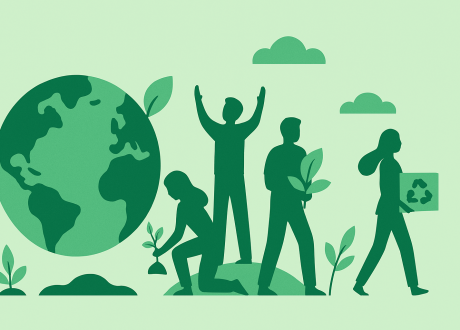
5 Steps to Build an Effective CSR Strategy
In today’s business landscape, Corporate Social Responsibility (CSR) has evolved from being a “nice-to-have” to ...

The 2024 Environmental Report of Google said artificial intelligence (AI) holds immense promise to drive climate action as AI has the potential to help mitigate 5-10% of global greenhouse gas (GHG) emissions by 2030.
Google is advancing climate action through AI in three key areas; organizing information, improving prediction, and better optimization, the report added.
As for organizing information, Fuel-efficient routing uses AI to analyze traffic, terrain and a vehicle’s engine to suggest the most efficient route. It’s estimated to have helped enable more than 2.9 million metric tons of GHG emissions reductions since the feature launched in late 2021 to the end of 2023 — that’s equivalent to taking approximately 650,000 fuel-based cars off the road for a year.
Concerning improving prediction, Google built a breakthrough global hydrological AI model and combined it with publicly available data sources to predict floods up to seven days in advance in over 80 countries. This covers territories where more than 460 million people live, helping these communities prepare for and respond to riverine floods.
Regarding better optimization, green light is an AI-based tool that helps city traffic engineers optimize the timing of traffic lights to reduce stop-and-go traffic and fuel consumption. This technology has the potential for up to 30% reduction in stops and up to 10% reduction in emissions at intersections.
Through its products, Google aims to help individuals, cities and other partners collectively reduce 1 gigaton of carbon equivalent emissions annually by 2030, and it’ll continue to develop technologies that help communities adapt to the effects of climate change.
In 2017, Google became the first major company to match 100% of its annual electricity consumption on a global basis with renewable energy, which we’ve achieved every year since.
Google has a bold goal to reach net-zero emissions across all of its operations and value chain by 2030, supported by a goal to run on 24/7 carbon-free energy (CFE) on every grid where it operates. In addition, it is working to advance water stewardship, build a circular economy, and restore and enhance nature and biodiversity.
This year’s report highlighted that 10 of its grid regions achieved at least 90% CFE, and even with its total electricity load increasing across our data centers, it maintained a global average of 64% CFE. We also celebrated a first-of-a-kind enhanced geothermal project now delivering CFE to the grid.
Google signed contracts to purchase approximately four gigawatts of clean energy generation capacity in locations such as Texas, Belgium and Australia — more than in any prior year.
Google implemented a Google Renewable Energy Addendum that asks our largest hardware manufacturing suppliers, based on spend, to commit to achieving a 100% renewable energy match by 2029.
The company’s water stewardship projects replenished an estimated 1 billion gallons of water, which represents 18% of its 2023 freshwater consumption and tripled our replenishment progress of 6% in 2022.
For new Google products launched and manufactured in 2023, its packaging was at least 99% plastic-free. Plus, packaging for our Pixel 8 and Pixel 8 Pro uses 100% plastic-free materials.
اترك تعليقا